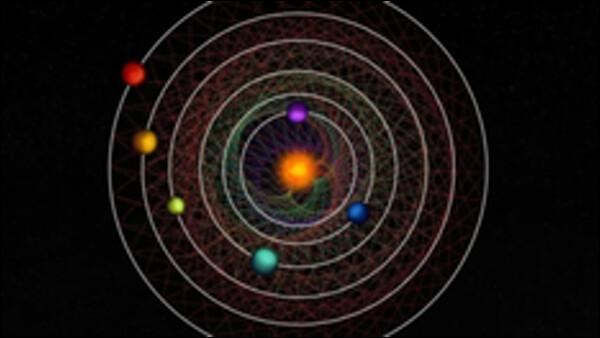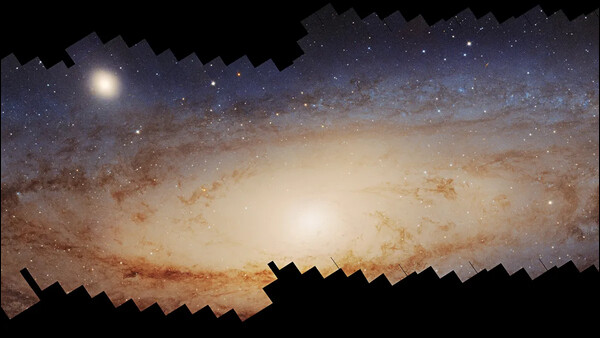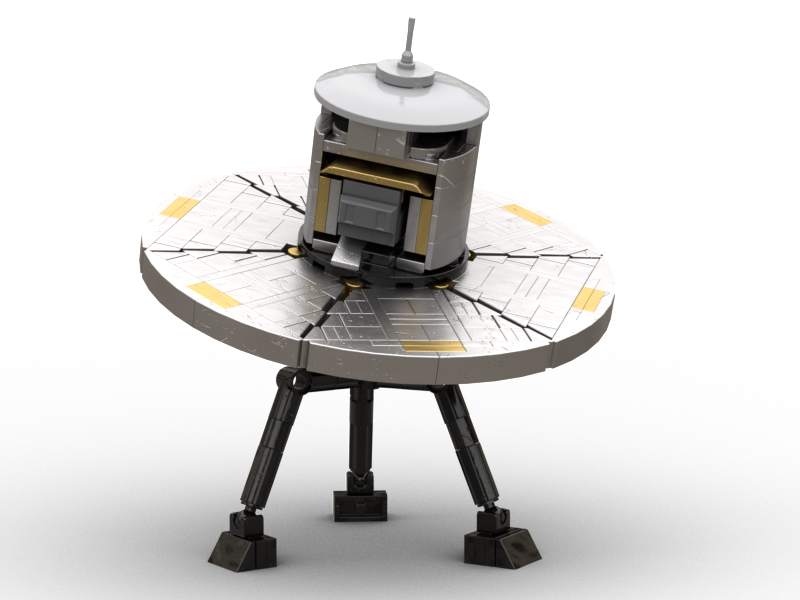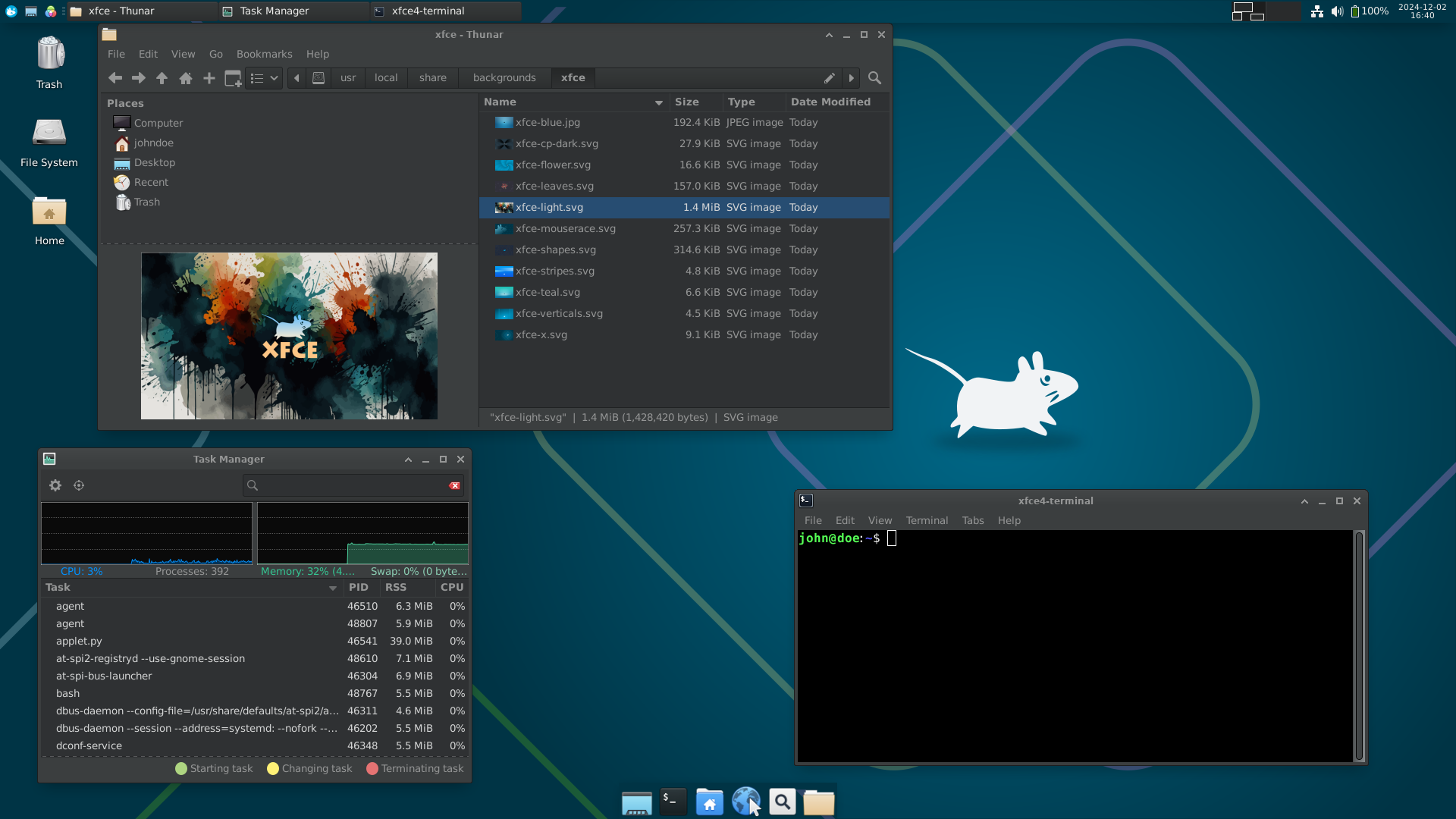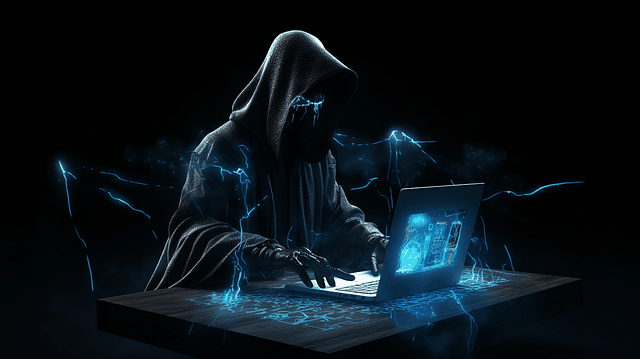| Previous
Page |
PCLinuxOS
Magazine |
PCLinuxOS |
Article List |
Disclaimer |
Next Page |
ICYMI: Six Security Vulnerabilities Found In rsync |
by Paul Arnote (parnote)
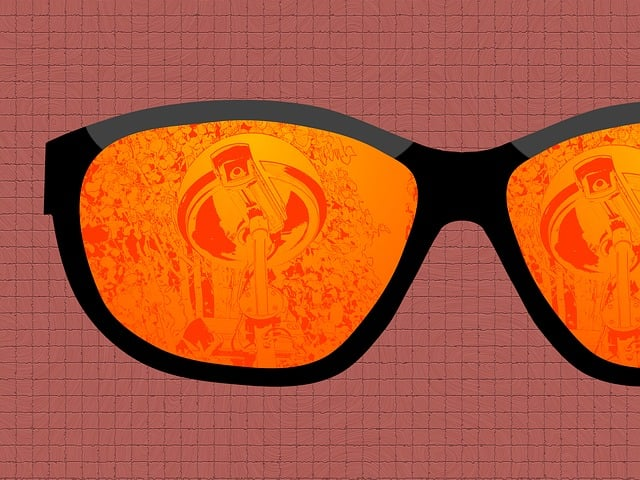 Image by Alexandr from Pixabay According to an article from The Verge, a recent Pew Research Center study on digital decay found that 38 percent of web pages accessible in 2013 are not accessible today. This happens because pages are taken down, URLs are changed, and entire websites vanish, as in the case of dozens of scientific journals and all the critical research they contained. This is especially acute for news: researchers at Northwestern University estimate we will lose one-third of local news sites by 2025, and the digital-first properties that have risen and fallen are nearly impossible to count. Laser-plasma accelerators could revolutionize scientific research by providing compact, efficient particle acceleration, according to an article from SciTechDaily. In laser-plasma acceleration, a laser shoots intense light pulses into a gas. The pulse is so strong that it ionizes the gas and generates a plasma – a mixture of electrons and ions. As the laser pulse forces the lighter electrons out of the way more quickly than the heavier ions, an electrically positively charged “bubble” forms behind it. If some electrons are injected into this bubble, the strength of the electromagnetic field can virtually catapult them forward. Anyone who has spent any amount of time on the internet in the past 15 years or so will fondly recall a website called Quora. It sought to answer all of those befuddling questions that plague a lot of us. You might also be aware that Quora is no longer even a shadow of its former self. If you’re curious about the decline of Quora, you’re going to love the article on Slate that details its decline.
According to an article from Hacker News, as many as six security vulnerabilities have been disclosed in the popular Rsync file-synchronization tool for Unix systems, some of which could be exploited to execute arbitrary code on a client. Simon Scannell, Pedro Gallegos, and Jasiel Spelman from Google Cloud Vulnerability Research have been credited with discovering and reporting the first five flaws. Security researcher Aleksei Gorban has been acknowledged for the symbolic-link race condition flaw. “Attackers can take control of a malicious server and read/write arbitrary files of any connected client,” the CERT Coordination Center (CERT/CC) said in an advisory. “Sensitive data, such as SSH keys, can be extracted, and malicious code can be executed by overwriting files such as ~/.bashrc or ~/.popt.” (Never fear … Texstar’s on it! Rsync has been updated in the PCLinuxOS repository.) Scientists have discovered a massive black hole in the early universe that appears to be “napping” after stuffing itself with too much food, according to an article from SciTechDaily. Similar to a bear hibernating after feasting on salmon, this black hole seems to have overeaten and entered a dormant state within its host galaxy. An international team of astronomers, led by the University of Cambridge, detected this ancient black hole using the James Webb Space Telescope. It dates back to just 800 million years after the Big Bang. Weighing in at an incredible 400 million times the mass of our Sun, this black hole ranks among the largest ever observed during that period of the universe’s development. It is so massive that it accounts for approximately 40% of its host galaxy’s entire mass — a stark contrast to black holes in the modern universe, which typically comprise only about 0.1% of their galaxy’s mass. However, despite its gigantic size, this black hole is eating, or accreting, the gas it needs to grow at a very low rate – about 100 times below its theoretical maximum limit – making it essentially dormant. For three decades, a tiny text file has kept the internet from chaos, according to an article from The Verge. This text file has no particular legal or technical authority, and it’s not even particularly complicated. It represents a handshake deal between some of the earliest pioneers of the internet to respect each other’s wishes and build the internet in a way that benefitted everybody. It’s a mini constitution for the internet, written in code. It’s called robots.txt and is usually located at yourwebsite.com/robots.txt. That file allows anyone who runs a website — big or small, cooking blog or multinational corporation — to tell the web who’s allowed in and who isn’t. Which search engines can index your site? What archival projects can grab a version of your page and save it? Can competitors keep tabs on your pages for their own files? You get to decide and declare that to the web. Now, AI is breaking that informal contract.
Sleep has an enormous impact on our health and wellbeing, and this article from NPR tries to dispel six of the many myths surrounding sleep. It helps our brains function, protects against heart disease and supports our immune system. And without it, we would die. Although for something so important, we aren't formally taught how to do it right, says Rebecca Robbins, a sleep scientist at the Brigham and Women's Hospital and an assistant professor of medicine at Harvard Medical School. “In America, you learn about nutrition or sex ed in school, but never about sleep.” It may be why only a third of Americans get the recommended amount of sleep each night, according to the U.S. Centers for Disease Control and Prevention. To help educate the public about healthy sleep, she and her colleagues identified popular myths about sleep and debunked them in a 2019 paper published in the journal Sleep Health. They looked at statements such as “many adults need only 5 or less hours of sleep” and “it does not matter what time of day you sleep.” And they found that these claims had “a limited or questionable evidence base.” (P.S. … we were never “wired” to sleep eight contiguous hours, either. The invention of the light bulb was the biggest culprit that changed our sleep patterns. Until recent history, humans got their sleep in what is called segmented sleep. Check out this DuckDuckGo search to further explore this topic.) The field of dentistry is lagging on adopting evidence-based care and, as such, is rife with overdiagnoses and overtreatments that may align more with the economic pressures of keeping a dental practice afloat than what care patients actually need, according to an article from ArsTechnica. At least, that's according to a trio of health and dental researchers from Brazil and the United Kingdom, led by epidemiologist and dentist Paulo Nadanovsky, of the University of the State of Rio de Janeiro. In a viewpoint published in May 2024 in JAMA Internal Medicine, the researchers point out that many common — nearly unquestioned — practices in dentistry aren't backed up by solid data. That includes the typical recommendation that everyone should get a dental check-up every six months. The researchers note that two large clinical trials failed to find a benefit of six-month check-ups compared with longer intervals that were up to two years. How do you know if a USB cable is hiding malicious hacker hardware? Are your USB cables sending your data to hackers? According to an article from PCWorld, we expect USB-C cables to perform a specific task: transferring either data or files between devices. We give little more thought to the matter, but malicious USB-C cables can do much more than what we expect. These cables hide malicious hardware that can intercept data, eavesdrop on phone calls and messages, or, in the worst cases, take complete control of your PC or cellphone. The first of these appeared in 2008, but back then they were very rare and expensive — which meant the average user was largely safeguarded. Since then, their availability has increased 100-fold and now with both specialist spy retailers selling them as “spy cables” as well as unscrupulous sellers passing them off as legitimate products, it’s all too easy to buy one by accident and get hacked.
Late last year, astronomers discovered a fascinating star system only 100 light-years away from us. Its six sub-Neptune planets circle very close to their host star in mathematically perfect orbits, piquing the interest of scientists searching for alien technology, or technosignatures, which they argue would offer compelling evidence of advanced life beyond Earth, according to an article from LiveScience. To be clear, no such evidence was found in the system, dubbed HD 110067. However, the researchers say they're not done looking yet. HD 11067 remains an interesting target for similar observations in the future. Americans are famous for many things, and probably just as infamous for many, many more. One of the more infamous things about Americans is how unhealthy the American diet is. An article from the New Yorker takes a look at “why is the American diet so deadly?” A scientist tried to discredit the theory that ultra-processed foods are killing us. Instead, he overturned his own understanding of obesity. Chances are high that someone you know is affected by Alzheimer’s, either directly as a patient, or as a caregiver to an Alzheimer’s patient. You might even have a family member suffering from Alzheimer’s. It is the dominant form of dementia, representing 60 to 70 percent of all dementia cases. With the number of Alzheimer’s cases expected to triple to afflict 153 million patients worldwide by the year 2050, researchers are working quickly to determine what other factors may be playing a role in the development of the insidious disease, according to an article from UnDark. While most of the latest research has focused on stopping or reversing the buildup of amyloid beta plaques in the brain, it may not be the solitary cause of the disease. Different and independent research teams across the globe are seeing data that seem to also implicate the body’s own immune system and a herpes virus as contributors to the development of Alzheimer’s.
The Linux Foundation announced on January 9, 2025 a fund to support and organize open projects to build Chromium-based browsers, according to an article from TechRepublic. The Supporters of Chromium-Based Browsers now accepts new members. “With the launch of the Supporters of Chromium-Based Browsers, we are taking another step forward in empowering the open source community,” said Jim Zemlin, executive director of the Linux Foundation, in a press release. “This project will provide much-needed funding and development support for open development of projects within the Chromium ecosystem.” Many browsers, including Arc, Microsoft Edge, and Opera, use Google’s Chromium as their underlying infrastructure. Interested potential partners can apply with the Linux Foundation. The purpose of the Supporters of Chromium-Based Browsers group is to “provide a neutral space where industry leaders, academia, developers, and the broader open source community can work together to support projects within the Chromium ecosystem,” the Linux Foundation wrote. As such, the group will “remove barriers to innovation, expand adoption, and ensure that projects within the Chromium ecosystem receive the resources they need to thrive.” Google, Meta, Microsoft, and Opera have endorsed the Supporters of Chromium-Based Browsers. The initiative will be a “neutral space” for “industry leaders, academia, developers, and the broader open source community,” the Linux Foundation said. A huge black hole myth has been busted: they don’t suck anything in. Many of us look at black holes as cosmic vacuum cleaners: sucking in everything in their vicinity. But it turns out they don’t suck at all, according to an article from BigThink. Black holes are the densest objects in the Universe, with at least several Suns worth of mass collected in a region that’s so small, even objects moving at the speed of light can’t escape from it. Although these objects exert a tremendous gravitational force, they don’t “suck matter in” any differently than neutron stars, white dwarfs, stars, or planets do: they just gravitate normally. According to an article published in the New York Times, some 4.5 billion years ago, the dwarf planet Pluto was suddenly joined by a companion. For a very brief period — perhaps only hours — they danced as if arm in arm before gently separating, a grande do-si-do that resulted in Pluto and its quintet of moons orbiting the sun together today. Astronomers have long wondered how Charon, the largest of those moons, came to orbit Pluto. A paper published January 6, 2025 in the journal Nature Geoscience described a possible sequence of events that may resolve the question.
Following the recent KDE Plasma 6.3 Beta, there's been a lot of bug fixing happening ahead of the stable release due out next month for this open-source desktop, according to an article from Phoronix. KDE developer Nate Graham is out with his newest weekly blog post summarizing all of the interesting Plasma developments taking place. This week has been particularly heavy with bug fixing, Graham notes: “We're barely a week into the Plasma 6.3 beta period, and Plasma's contributors are already fixing record amounts of bugs! The number of 15-minute bugs has dropped to the low 20s, and there's only one VHI priority bug left. But that's not all; they hammered on a ton more bugs as well, and did quite a bit of UI polishing!” KDE developers this week added several new search providers for use from KRunner like Docker Hub, the Mozilla Developer Network, and Nix packages. There have also been a number of UI improvements for Plasma 6.3. The KWin compositor is also now smarter around its scale factor handling, Night Light now following ICC profiles, a few performance optimizations, and a lot of bug fixing. According to an article from The Register, Microsoft eggheads say AI can never be made secure – after testing Redmond's own products. If you want a picture of the future, imagine your infosec team stamping on software forever. Microsoft brainiacs who probed the security of more than 100 of the software giant's own generative AI products came away with a sobering message: The models amplify existing security risks and create new ones. The 26 authors offered the observation that “the work of securing AI systems will never be complete” in a pre-print paper titled: Lessons from red-teaming 100 generative AI products. That's the final lesson of eight offered in the paper, though it's not entirely apocalyptic. The authors, Azure CTO Mark Russinovich among them, argue that with further work, the cost of attacking AI systems can be raised – as has already happened for other IT security risks through defense-in-depth tactics and security-by-design principles. And in that respect it's perhaps all not too surprising – is any non-trivial computer system ever totally utterly secure? Some say yes, some say no. As news still sinks in of an exploit methodology that can seemingly steal sensitive data using the sign-in-with-Google authentication process, and users of Chrome are warned not to click twice as new attack methodology is confirmed, another threat has been disclosed that Google users need to take note of, according to an article from Forbes. Although two-factor authentication bypassing, credential-stealing, attacks are nothing new, security researchers have called this latest ongoing perpetual hacking campaign a “new extreme.” Here’s what you need to know.
Andromeda is the closest large galaxy to the Milky Way. And it is getting closer, as the two will merge in several billion years. It has been an object of study for centuries, but we have never seen it like this, according to an article from IFL Science. The Hubble Space Telescope has just finished a campaign of observations that lasted for more than 10 years, creating the deepest observations of this galaxy ever. The galaxy is so large that 600 separate fields of view had to be assembled in an extraordinary mosaic with 2.5 billion pixels. Hubble was able to resolve about 200 million stars, all hotter than our Sun. A large number, but still a tiny fraction of the galaxy’s total stellar population. Andromeda is estimated to have 1 trillion stars. Still, this drop in the ocean tells us a lot about the galaxy. “With Hubble, we can get into enormous detail about what's happening on a holistic scale across the entire disk of the galaxy. You can't do that with any other large galaxy,” principal investigator Ben Williams of the University of Washington said in a statement. The work has revealed that Andromeda is a lot more chaotic than expected. Similar to what recently retired Gaia did for the Milky Way, Hubble spotted the hallmarks of a past collision: the presence of a large stellar population, coherent streams of stars, etc. Scientists, who recently discovered that metal lumps on the dark seabed make oxygen, have announced plans to study the deepest parts of Earth's oceans in order to understand the strange phenomenon, according to an article from the BBC. Their mission could “change the way we look at the possibility of life on other planets too,” the researchers say. The initial discovery confounded marine scientists. It was previously accepted that oxygen could only be produced in sunlight by plants — in a process called photosynthesis. If oxygen — a vital component of life — is made in the dark by metal lumps, the researchers believe that process could be happening on other planets, creating oxygen-rich environments where life could thrive. Lead researcher Prof. Andrew Sweetman explained: “We are already in conversation with experts at NASA who believe dark oxygen could reshape our understanding of how life might be sustained on other planets without direct sunlight. Giant isopods of the genus Bathynomus, which can grow over 30 cm in length, are commonly known in Vietnam as bọ Biel, or “sea bugs,” according to an article from SciTechDaily. For the first time, a species from this genus has been identified in Vietnamese waters and named Bathynomus vaderi. The species name vaderi was inspired by the shape of its head, which closely resembles the iconic helmet of Darth Vader, the legendary Sith Lord from Star Wars. Bathynomus vaderi is part of the “supergiant” group of isopods, reaching up to 32.5 cm in length and weighing more than a kilogram. Currently, this species has been found only near Vietnam’s Spratly Islands. However, ongoing research may reveal its presence in other areas of the South China Sea. Giant isopods like Bathynomus vaderi have become an expensive delicacy in Vietnam. Until 2017, local fishermen only sold them as a bycatch product for low prices, but in recent years the media has drawn public attention to this unusual seafood. Some go as far as claiming it’s more delicious than lobster, the “king of seafood”.
Night has fallen for the star-tracking European Space Agency (ESA) spacecraft, Gaia. The mission, which has been mapping the Milky Way for the last 12 years, shut down science operations on January 15, 2025, according to an article from Space.com. The close of the mission's data-collecting phase was necessitated by Gaia running low on cold gas propellant it uses to spin. The top-hat-shaped craft has been using around 12 grams of this propellant a day since it launched from Europe's Spaceport in French Guiana atop a Soyuz-Fregat rocket on Dec. 19, 2013. However, even though Gaia may be closing its eyes to the cosmos, this is far from the end of the spacecraft's influence on space science. “In my mind, the Gaia mission is not ending — just the taking of data,” Kareem El-Badry, a Harvard and Smithsonian Center for Astrophysics (CfA) researcher and frequent Gaia data user, told Space.com. “I expect Gaia's best results are still to come. That includes in the areas I am most interested in — binary stars and black holes.” Moderna has been awarded approximately $590 million from the federal government to help speed up the development of an mRNA-based bird flu vaccine, alongside other influenza vaccines, health officials announced on January 17, 2025, according to an article from ABC News. The U.S. Department of Health and Human Services (HHS) said in a press release that the funding will allow the pharmaceutical company to accelerate the development of an H5N1 mRNA influenza vaccine “that is well-matched to strains currently circulating in cows and birds, and expands the clinical data supporting the use of mRNA vaccines that may be needed if other influenza strains emerge with pandemic potential.” Moderna said the funding will support the expansion of clinical studies “for up to five additional subtypes of pandemic influenza.”
After almost two years of work, the Xfce team is happy to announce the release of Xfce 4.20! Since Xfce 4.18, a lot of major development has happened. The Xfce team added many nice new features, did a gazillion bug fixes, and did various minor improvements. Finally, all that was released for your pleasure. The major focus during this development cycle was the preparation of the codebase to be ready for Wayland. This means that the Xfce team now has experimental Wayland support for most components. You can check out all of the improvements and changes here. Google says it has begun requiring users to turn on JavaScript, the widely used programming language to make web pages interactive, in order to use Google Search, according to an article from TechCrunch. In an email to TechCrunch, a company spokesperson claimed that the change is intended to “better protect” Google Search against malicious activity, such as bots and spam, and to improve the overall Google Search experience for users. The spokesperson noted that, without JavaScript, many Google Search features won’t work properly and that the quality of search results tends to be degraded. Tourists of time all know one rule: never change the past. Whether it's preventing your own conception or handing the blueprints to a time machine to a younger version of yourself, generating a paradoxical sequence of events is a big no-no that cancels out the possibility of time travel. Vanderbilt University physicist Lorenzo Gavassino isn't so sure this is as big an obstacle as time-traveler pessimists have made out, according to an article from ScienceAlert. In a recent examination of the finer details on entropy, space, and time, he's found we can murder all the grandparents we want. The 'grandfather paradox' is a self-contradictory situation; traveling back in time and killing your grandfather as a child would prevent your birth. Which means you now don't exist, so how can you go back and kill him? It's possible you've already done it, in fact, and, well, conveniently forgotten all about it.
A hack and data breach at location data broker Gravy Analytics is threatening the privacy of millions of people around the world whose smartphone apps unwittingly revealed their location data collected by the data giant, according to an article from TechCrunch. The full scale of the data breach isn’t yet known, but the alleged hacker has already published a large sample of location data from top consumer phone apps — including fitness and health, dating, and transit apps, as well as popular games. The data represents tens of millions of location data points of where people have been, live, work, and travel between. News of the breach broke in the second weekend of January after a hacker posted screenshots of location data on a closed-access Russian language cybercrime forum, claiming they had stolen several terabytes of consumers’ data from Gravy Analytics. For scientists, our earliest ancestor wasn’t Adam or Eve but Luca. Luca didn’t look anything like us – it was a single-celled bacterium-like organism, according to an article from The Guardian. A recent study by a team of scientists based in the UK has delivered rather shocking news about this illustrious forebear. Despite having lived almost as far back as seems possible, Luca was surprisingly similar to modern bacteria – and what’s more, it apparently lived in a thriving community of other organisms that have left no trace on Earth today. Luca – short for the last universal common ancestor, the progenitor of all known life on Earth – seems to have been born 4.2bn years ago. Back then, our planet was no Eden but something of a hell on Earth: a seething mass of volcanoes pummeled by giant meteorites, and having recovered from a cosmic collision that blasted the world apart and created the moon from some of the fragments. There is good reason why the geological aeon before 4bn years ago is called the Hadean, after the Greek god of the underworld Hades. The James Webb Space Telescope has been awe-inspiring since its 2021 launch, delivering breathtaking views of distant galaxies and offering insights into the early universe. But another groundbreaking telescope is about to join the fray, bringing a fresh perspective and tackling challenges Webb wasn’t designed to address, according to an article from JasonDeegan.com. The Vera C. Rubin Observatory, perched high in Chile’s Andes mountains, promises to revolutionize how we see and understand the universe. Located 2,700 meters above sea level on Cerro Pachón, the Vera C. Rubin Observatory boasts a 3.2-gigapixel camera — the most advanced of its kind. After 25 years of planning and development, this technological marvel is ready to start scanning the skies in February 2025. Unlike Webb, which focuses on the infrared spectrum to peer deep into space and time, Rubin is designed for a different mission: continuously mapping vast sections of the night sky. Rubin’s three-mirror design enables it to observe enormous swathes of the cosmos, revisiting each section every three days. This rapid cadence will allow it to monitor the movement and brightness of objects like asteroids, stars, and galaxies, making it invaluable for tracking dynamic phenomena and potential threats to Earth. |



